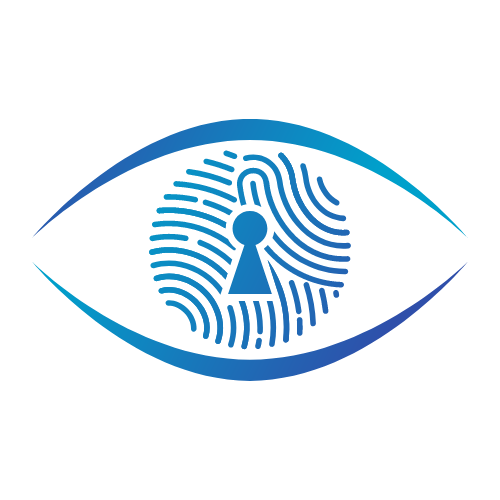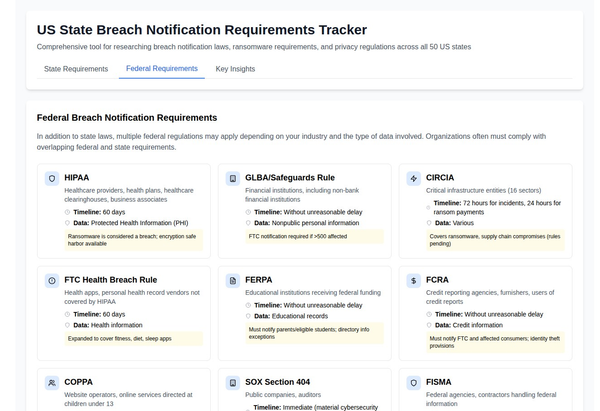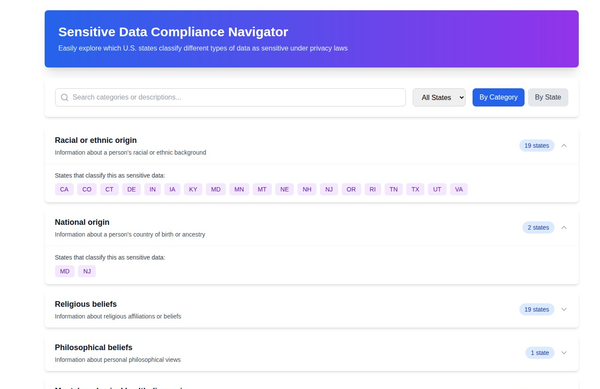Cybersecurity Frameworks: A Comprehensive Guide

Cybersecurity frameworks are essential tools for organizations of all sizes. They offer a structured approach to managing and mitigating cyber risks, which are becoming increasingly complex and frequent in today's digital landscape. This article will provide a detailed overview of several prominent cybersecurity frameworks, including their key features, benefits, and how they can help organizations enhance their security posture and achieve compliance with relevant regulations.
CIS Controls: A Foundational Approach to Cybersecurity
The CIS Controls, developed by the Center for Internet Security, offer a prioritized set of 18 essential security actions designed to protect against the most common cyberattacks. These controls are grouped into three impact levels: basic, foundational, and organizational.
- Basic controls represent the fundamental steps that every organization should take to establish a basic level of security. Some examples include:
- Inventorying and controlling hardware and software assets: Knowing what assets you have is crucial for protecting them effectively.
- Implementing continuous vulnerability management: Staying ahead of software weaknesses is essential for mitigating risks.
- Controlling administrative privileges: Limiting access to sensitive systems and data helps prevent unauthorized changes and data breaches.
- Foundational controls build upon the basic controls and provide a stronger security foundation.
- Organizational controls address broader aspects of cybersecurity, such as security awareness training and incident response planning.
The CIS Controls are known for their practicality and straightforwardness, making them particularly suitable for organizations starting their cybersecurity journey or those with limited resources. By implementing these controls, organizations can establish a solid security foundation and progressively enhance their defenses as they mature.
NIST CSF: A Flexible and Adaptable Framework for Enhanced Resilience
The NIST Cybersecurity Framework (CSF), developed by the US National Institute of Standards and Technology, provides a comprehensive approach to managing cybersecurity risks for organizations of all sizes, particularly those critical to national infrastructure. The framework consists of five core functions: identify, protect, detect, respond, and recover.
- Identify: Develop an understanding of your organization's cybersecurity risks, critical assets, and legal and regulatory requirements. This function involves activities such as asset management, business environment understanding, risk assessment, and developing a risk management strategy.
- Protect: Implement safeguards to protect critical infrastructure services and sensitive data. Key activities include access control, awareness and training, data security, information protection policies and procedures, maintenance, and protective technology.
- Detect: Develop and implement activities to identify cybersecurity events promptly. This function emphasizes continuous monitoring, implementing detection processes, and conducting security event analysis.
- Respond: Take appropriate and timely action to mitigate the impact of a detected cybersecurity event. This function includes response planning, establishing communication channels, analyzing the event, implementing mitigation strategies, and identifying areas for improvement.
- Recover: Maintain plans for resilience and restoring capabilities or services impaired due to a cybersecurity incident. Key activities involve recovery planning, implementing improvements based on lessons learned, and communicating with stakeholders.
The NIST CSF's flexibility and adaptability are among its key strengths. The framework can be tailored to organizations of all sizes, sectors, and maturity levels, from small businesses to large enterprises. Its risk-based approach allows organizations to prioritize their efforts and resources based on their unique risk profiles. Additionally, the framework provides a common language for cybersecurity, facilitating communication and collaboration among internal teams and external stakeholders.
ISO 27001: The Gold Standard for Information Security Management
ISO 27001 is an internationally recognized standard for establishing, implementing, maintaining, and continuously improving an Information Security Management System (ISMS). This comprehensive framework covers various aspects of information security, including risk assessment, access control, physical security, incident management, and employee training.
One of the key benefits of ISO 27001 is its holistic approach to information security. The standard goes beyond technical controls and requires organizations to consider all aspects of security, including physical security, employee training, and supplier management. This comprehensive approach makes ISO 27001 a valuable framework for achieving compliance with data protection regulations like the General Data Protection Regulation (GDPR).
ISO 27001 and GDPR Compliance: A Powerful Synergy
The GDPR, a comprehensive data protection regulation applicable in the European Union, has significantly impacted how organizations worldwide handle personal data. ISO 27001's focus on information security aligns well with GDPR's requirements, making it a strong foundation for achieving compliance.
Many ISO 27001 controls directly support GDPR requirements, such as data encryption, access control, incident response procedures, and vendor management. By implementing ISO 27001, organizations can effectively address several GDPR requirements, including:
- Data Protection Principles: ISO 27001's focus on confidentiality, integrity, and availability of information aligns with GDPR's data protection principles.
- Security Measures: ISO 27001 requires organizations to implement appropriate technical and organizational security measures to protect personal data, which is a key requirement of GDPR.
- Risk Assessment: Both ISO 27001 and GDPR emphasize the importance of conducting regular risk assessments to identify and mitigate risks to personal data.
However, it's essential to note that ISO 27001 alone does not guarantee complete GDPR compliance. The GDPR has specific requirements that extend beyond the scope of ISO 27001, such as obtaining explicit consent for data processing, addressing data subject rights, and establishing processes for data breach notifications. To ensure full GDPR compliance, organizations need to implement additional measures and controls that specifically address these requirements.
ISO 27701: Extending ISO 27001 for Enhanced Privacy Management
ISO 27701, a privacy extension to ISO 27001, provides additional guidance on implementing a Privacy Information Management System (PIMS) that aligns with GDPR and other privacy regulations. It builds upon the ISMS framework established by ISO 27001 and extends it to cover privacy management aspects comprehensively.
Key aspects of ISO 27701 include:
- PII Controller and Processor Guidance: Provides specific controls for organizations acting as PII controllers or processors, two critical roles defined by GDPR.
- Data Subject Rights: Addresses the management of data subject rights, such as the right to access, rectification, erasure, and data portability, as required by GDPR.
- Privacy Impact Assessments (PIAs): Requires conducting PIAs for new or changed processing activities that are likely to result in a high risk to the rights and freedoms of individuals, as stipulated by GDPR.
Implementing ISO 27701 can significantly enhance an organization's privacy management capabilities and demonstrate a strong commitment to protecting personal data. It provides a clear pathway to GDPR compliance and helps organizations address the evolving privacy landscape more effectively.
COBIT: Aligning IT Governance and Business Goals
COBIT (Control Objectives for Information and Related Technologies), a framework developed by ISACA (Information Systems Audit and Control Association), focuses on aligning IT governance and management with business objectives. It provides a comprehensive set of best practices and guidelines to help organizations govern and manage their IT environments effectively and ensure that IT investments support and drive business success.
COBIT's framework is built around five key principles:
- Meeting Stakeholder Needs: Ensuring that the organization's IT activities and investments align with the needs and expectations of its stakeholders.
- Covering the Enterprise End-to-End: Integrating IT governance and management into the overall enterprise governance framework, encompassing all functions and processes.
- Applying a Single, Integrated Framework: Providing a consistent and integrated approach to IT governance and management, ensuring a holistic view of the organization's IT landscape.
- Enabling a Holistic Approach: Considering all enablers of IT governance and management, including processes, organizational structures, culture, ethics, and behavior.
- Separating Governance From Management: Clearly defining the roles and responsibilities of governance and management to ensure accountability and proper execution.
COBIT is particularly valuable for organizations looking to enhance their IT governance, manage risks effectively, and ensure that their IT investments align with their business goals. Its comprehensive framework, encompassing 40 governance and management processes, provides a structured approach to managing an organization's IT environment and maximizing the value of its IT investments.
Choosing the Right Cybersecurity Framework
Selecting the appropriate cybersecurity framework is crucial for its successful implementation and effectiveness. Organizations should consider several factors when choosing a framework, including their size, industry, regulatory requirements, security maturity level, and available resources.
- Organization Size and Industry: A small startup will have different cybersecurity needs and resources compared to a large, multinational corporation. Similarly, organizations in different industries face unique cybersecurity challenges. For instance, financial institutions have stricter security requirements than retail companies.
- Regulatory Requirements: Organizations must comply with relevant regulations and legal obligations, which may dictate specific security controls and frameworks. For example, healthcare providers in the US must adhere to HIPAA, while organizations handling personal data of EU residents must comply with GDPR.
- Security Maturity Level: Organizations just starting their cybersecurity journey may benefit from a more foundational framework like the CIS Controls, while those with more mature security practices might consider implementing ISO 27001.
- Available Resources: Implementing robust cybersecurity frameworks requires time, budget, personnel, and expertise. Organizations should choose a framework that aligns with their available resources to ensure successful implementation and avoid overstretching their capabilities.
Implementing a Cybersecurity Framework: Key Considerations
Implementing a cybersecurity framework effectively requires careful planning, dedicated resources, and a commitment to continuous improvement. Here are some key considerations for successful framework implementation:
- Conduct a Thorough Gap Analysis: Before implementing a framework, organizations should conduct a comprehensive gap analysis to assess their current security posture against the framework's requirements. This analysis helps identify areas where controls need to be implemented or strengthened and provides a roadmap for implementation.
- Develop a Detailed Implementation Plan: A well-defined implementation plan outlines the steps, timelines, responsibilities, and resources required for successful framework adoption. It should include clear milestones and metrics to track progress and ensure accountability.
- Secure Buy-in From Top Management: Executive support is crucial for successful framework implementation. Top management should understand and champion the importance of cybersecurity and allocate the necessary resources to support implementation efforts.
- Foster a Culture of Security: Cybersecurity is everyone's responsibility, not just the IT department's. Organizations should prioritize security awareness training to educate employees about cyber risks, empower them to identify and report potential threats, and promote a security-conscious culture.
- Implement Robust Technical Controls: Cybersecurity frameworks often require organizations to implement technical controls to protect their systems and data. These controls may include firewalls, intrusion detection and prevention systems, data encryption solutions, and access control mechanisms.
- Establish Strong Vendor Management Practices: Third-party vendors and suppliers can pose significant cybersecurity risks if their security practices are not aligned with the organization's standards. Implementing robust vendor management processes, including due diligence, risk assessments, and contractual obligations, is crucial for mitigating third-party risks.
- Monitor, Review, and Continuously Improve: Cybersecurity is an ongoing process, not a one-time project. Organizations should continuously monitor and review the effectiveness of their cybersecurity framework, conduct regular risk assessments, and adapt their controls and processes to address new and evolving threats.
Conclusion
Implementing a cybersecurity framework is essential for organizations of all sizes to manage and mitigate their cyber risks effectively. By establishing a structured approach to cybersecurity, organizations can enhance their security posture, protect their valuable assets, and build resilience against increasingly sophisticated cyber threats. However, choosing the right framework and implementing it effectively requires careful consideration of various factors, including the organization's specific needs, resources, and risk profile. A well-defined implementation plan, executive support, a culture of security, and a commitment to continuous improvement are crucial for maximizing the framework's effectiveness and achieving sustainable cybersecurity outcomes.





